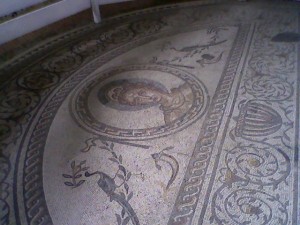Hand a child a crayon and ask them to draw a castle, and they might etch something not dissimilar to the gatehouse of Tonbridge Castle. Its symmetrical facade, with round towers jutting from the corners (complete with arrow slit windows), its battlements, all ooze bulk, rigidity and, well, medievalism.

As well it might. The gatehouse was just one part of the original Motte and Bailey castle, built on land at the Medway Crossing granted by William the Conqueror to a supporter following the Norman Invasion. The castle we see today is mainly from the 13th century. After many centuries as a setting for conflict intrigue – both political and familial – the most recent few centuries, not unusually, saw the gradual dismantling of the structure for its stone, and at one point in the 18th century it was described as an ‘ancient castle and vineyard’. This was all rectified in the past decade. Missing floors were reinstalled, a spiral staircase repaired, roofing replaced. The newly created rooms continue to play a civic and entertainment role, for marriages, exhibitions and so on.
What remains of the castle complex now sits near the shopping street, housing a Tourist Information office, retaining an air of grandeur, but of a somewhat contentedly quiet nature, particularly when compared with the proud bulk of Tonbridge School nearby. The mound is minus its keep, but offers fine views down to the gatehouse, over the town, and across the countryside around.
On the day of our visit, the castle grounds housed a mediaeval fayre in full swing. The juxtaposition of tracksuited youth and court jester bemused – but crucially amused too, and everything and everyone exuded relaxed Sunday afternoon charm. And so a once mighty fortress steeped in centuries of bloodshed today finds itself the setting for family days out; it’s a pleasant enough spot for a genteel retirement.
